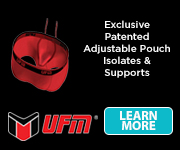How To Choose The Snowboard That's Right For You
Choosing the right snowboard can make a significant difference in your performance and enjoyment on the slopes. With a plethora of options available, selecting the ideal snowboard can be a daunting task, especially for beginners. This guide will help you understand the various types of snowboards, the key factors to consider, and how to find the perfect board that suits your riding style and skill level.
1. Understanding the Types of Snowboards
All-Mountain Snowboards
Advantages:
Versatility: Designed to handle a variety of terrains and conditions, making them suitable for beginners and advanced riders alike.
Balance: Offer a balanced mix of performance and stability, making them a popular choice for all types of riding.
Disadvantages:
Specialization: While versatile, they may not excel in any specific area like powder or park riding.
Freestyle Snowboards
Advantages:
Flexibility: Typically shorter and more flexible, allowing for better maneuverability and tricks.
Lightweight: Easier to control in the air, making them ideal for jumps and tricks.
Disadvantages:
Stability: Less stable at high speeds and in deep powder compared to other types of boards.
Freeride Snowboards
Advantages:
Performance: Designed for off-piste, backcountry, and powder riding, offering excellent performance in these conditions.
Stability: Longer and stiffer, providing better stability and control in deep snow.
Disadvantages:
Versatility: Not as versatile as all-mountain boards, making them less suitable for beginners or park riding.
Powder Snowboards
Advantages:
Floatation: Designed with a wider nose and tapered tail to provide better floatation in deep powder.
Performance: Offer exceptional performance in powder conditions.
Disadvantages:
Versatility: Limited versatility on groomed trails and hardpack snow.
Splitboards
Advantages:
Backcountry Access: Can be split into two skis for uphill travel, allowing for backcountry exploration.
Versatility: Combines the benefits of skiing and snowboarding for off-piste adventures.
Disadvantages:
Complexity: Requires additional equipment and setup, making them less suitable for beginners.
2. Key Factors to Consider
Riding Style
All-Mountain: If you enjoy a variety of terrains and conditions, an all-mountain board is a great choice.
Freestyle: If you spend most of your time in the park, hitting jumps, and doing tricks, a freestyle board is ideal.
Freeride: If you prefer off-piste and backcountry riding, a freeride board will suit you best.
Powder: If you love riding in deep powder, a powder board is the way to go.
Skill Level
Beginner: Look for boards that are softer and more forgiving, with a rocker or flat profile to help you learn the basics.
Intermediate: Choose a board that matches your developing skills and riding style, with a medium flex and hybrid profile.
Advanced: Opt for a board that offers high performance and stability, with a stiffer flex and camber profile.
Board Length
The length of your snowboard should be based on your height, weight, and riding style. A general guideline is that the board should reach somewhere between your chin and nose when stood on end. Shorter boards are easier to maneuver and are better for freestyle riding, while longer boards offer more stability and are suited for freeride and powder conditions.
Board Width
The width of your snowboard should match the size of your boots. If you have larger feet (size 11 or higher), consider a wide board to prevent toe and heel drag. The board's waist width should be proportional to your boot size for optimal performance and control.
Camber and Rocker Profiles
Camber: Traditional camber boards offer stability and edge control, making them ideal for carving and high-speed riding.
Rocker: Rocker boards have a reverse camber, providing better floatation in powder and easier turn initiation, making them suitable for beginners and powder conditions.
Flat: Flat boards offer a balance between camber and rocker, providing stability and maneuverability.
Hybrid: Hybrid profiles combine camber and rocker elements, offering a versatile performance for various riding styles.
Flex
Soft Flex: Softer boards are more forgiving and easier to control, making them ideal for beginners and freestyle riders.
Medium Flex: Medium flex boards offer a balance of performance and flexibility, suitable for all-mountain riding.
Stiff Flex: Stiffer boards provide better stability and response, making them ideal for advanced riders and high-speed carving.
Construction Materials
The materials used in the construction of the snowboard can affect its performance and durability. Common materials include wood cores, fiberglass, carbon fiber, and various types of laminates. Higher-end boards often feature advanced materials for improved performance and longevity.
Bindings Compatibility
Ensure that your bindings are compatible with the snowboard you choose. Most snowboards use standard mounting systems, but some brands have proprietary systems that require specific bindings.
3. Tips for Choosing the Right Snowboard
Demo Different Boards
If possible, try out different snowboards before making a purchase. Many resorts and shops offer demo programs that allow you to test various boards on the slopes. This hands-on experience can help you determine which board feels best for your riding style and skill level.
Consider Your Local Conditions
Think about the typical conditions at your local mountain. If you ride in an area with lots of powder, a powder or freeride board might be ideal. For groomed trails and park riding, an all-mountain or freestyle board could be a better fit.
Set a Budget
Snowboards come in a wide range of prices. Set a budget and look for a board that offers the best value within your price range. Remember that higher-end boards often feature advanced technologies and materials that can enhance your performance.
Read Reviews
Read reviews from other riders and experts to get insights into the performance and durability of different snowboards. Online forums, websites, and magazines are great sources of information and can help you make an informed decision.
Consult with Experts
Talk to staff at your local snowboard shop or resort. They can provide valuable advice based on your riding style, skill level, and local conditions. Their expertise can help you narrow down your options and find the perfect board.
4. Brand Recommendations
Top Brands for Snowboards
Burton: Known for their innovative designs and high-quality materials, Burton offers a wide range of snowboards for all skill levels and riding styles.
Lib Tech: Offers unique technologies and eco-friendly materials, with a focus on performance and sustainability.
Ride: Known for their durable and high-performance boards, Ride caters to a variety of riding styles and conditions.
K2: Offers a broad range of snowboards, from beginner-friendly options to advanced, high-performance models.
GNU: Features innovative designs and technologies, with a focus on versatility and performance.
Popular Models
Burton Custom: A versatile all-mountain board suitable for a wide range of conditions and riding styles.
Lib Tech T. Rice Pro: Designed in collaboration with pro rider Travis Rice, this board offers exceptional performance in freeride and backcountry conditions.
Ride Warpig: A shorter, wider board that excels in powder and park conditions, offering a fun and playful ride.
K2 Raygun: A great all-mountain board for beginners and intermediate riders, offering a balance of performance and affordability.
GNU Riders Choice: A versatile board with a hybrid profile, suitable for various terrains and riding styles.
5. Care and Maintenance
Waxing
Regularly waxing your snowboard helps maintain its base and improves performance. Wax your board every few rides or when it feels slow and sticky. Use a universal wax or a temperature-specific wax based on the conditions.
Edge Maintenance
Keep your edges sharp and free of burrs. Regularly check for nicks and dings, and use a file or edge tool to maintain a clean edge. Sharp edges improve grip and control, especially on hardpack and icy conditions.
Storage
Store your snowboard in a cool, dry place away from direct sunlight and extreme temperatures. Avoid leaving it in the car or garage for extended periods. Use a board bag for protection during transportation and storage.
Repairs
Address any damage to your snowboard promptly. Small dings and scratches can be fixed with P-Tex and epoxy, while more significant damage may require professional repair. Regular maintenance ensures your board stays in top condition and extends its lifespan.
Choosing the right snowboard involves considering various factors, including your riding style, skill level, board length and width, camber and rocker profiles, flex, and construction materials. By understanding these elements and prioritizing your specific needs, you can find the perfect snowboard for your adventures on the slopes. Whether you're a beginner or an advanced rider, the right snowboard will enhance your performance and enjoyment, allowing you to fully embrace the thrill of snowboarding.
About the Author: Earnest Sherrill
Earnest Sherrill is a passionate outdoor enthusiast and writer who resides in the warm and breezy state of Texas. With a deep love for nature, Earnest enjoys exploring the great outdoors and sharing his experiences through his writing. He writes about various aspects of outdoor life and the intriguing happenings of everyday experiences. When not writing, Earnest cherishes spending time with his youngest grandchildren, who bring vibrant energy and robust attitudes to his life. Stay connected with Earnest to discover more about the wonders of the outdoors and the joys of life's adventures.
Other Projects
Subscribe
Subscribing will enable you to get regular notifications about new postings...

Refer a friend and earn $10 at Atlanta Cutlery Corp.



